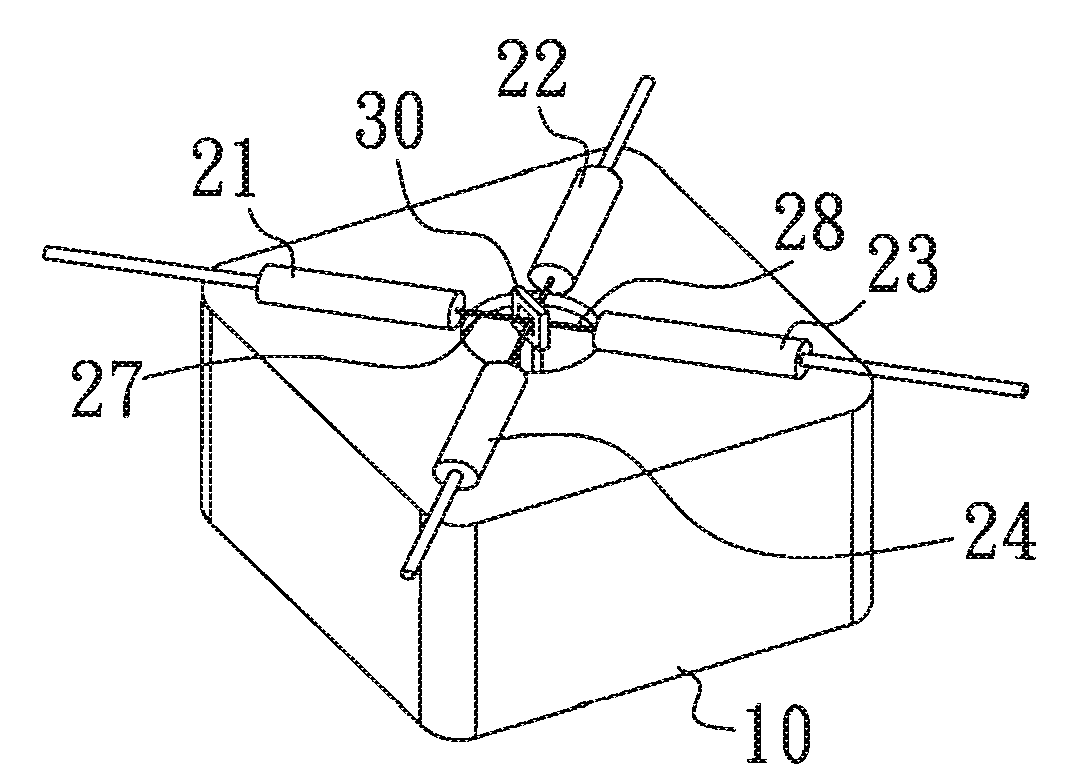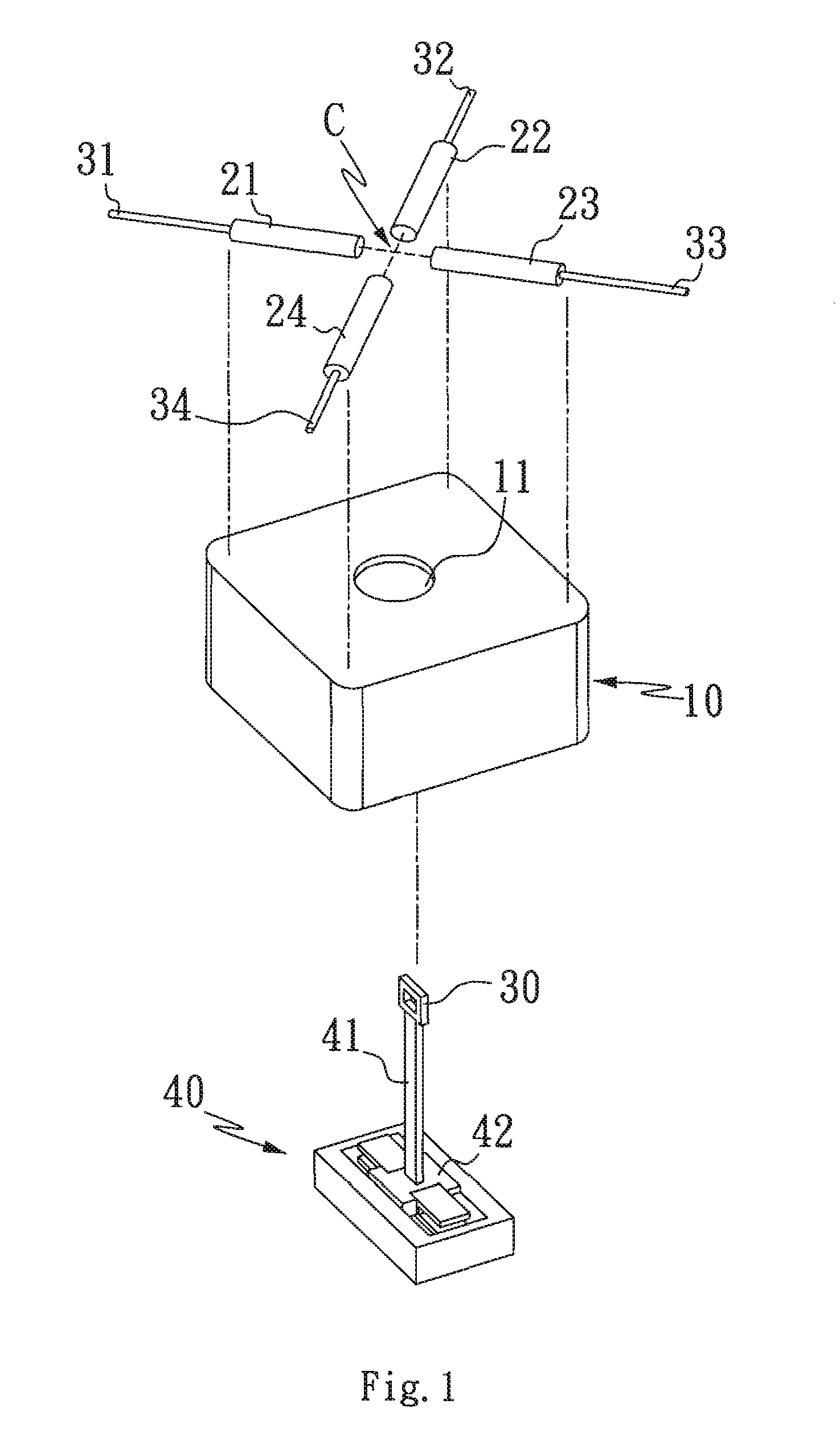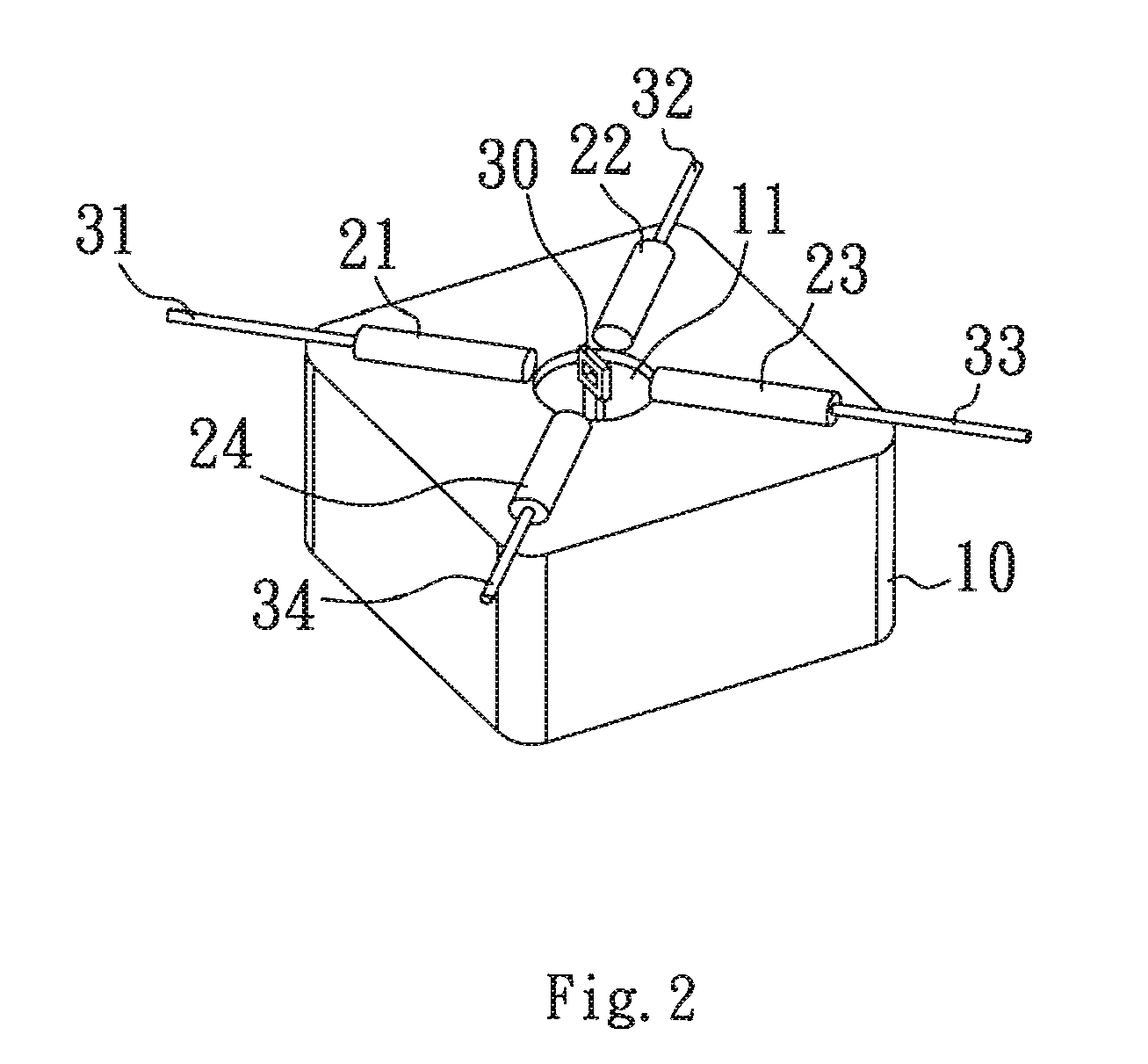2x2 Mechanical optical switch
a mechanical and optical switch technology, applied in the field of optical switches, can solve the problems of high manufacturing cost, complicated and power-consuming, advantageous to the future development and popularity of the all-optical network system, etc., and achieve the effects of improving long-term stability, simple optical assembly, and new structural design
- Summary
- Abstract
- Description
- Claims
- Application Information
AI Technical Summary
Benefits of technology
Problems solved by technology
Method used
Image
Examples
Embodiment Construction
[0020]To make it easier for our examiner to understand the objective, innovative features and performance of the present invention, we use preferred embodiments and the accompanying drawings for a detailed description of the present invention.
[0021]Referring to FIGS. 1 and 2 for an exploded view and a perspective view of a 2×2 mechanical optical switch in accordance with the present invention respectively, the 2×2 mechanical optical switch comprises a base 10, two input collimators 21, 22, two output collimators 23, 24, a double-sided reflection ultra thin mirror 30 and a mirror switch 40, wherein the collimators 21, 22, 23, 24 are coupled to optical fibers 31, 32, 33, 34 respectively, and the two input collimators 21, 22 and the two output collimators 23, 24 are installed on a common plane of the base 10, and the connection line of the input collimator 21 and the output collimator 23 is intersected with the connection line of the input collimator 22 and the output collimator 24 at ...
PUM
 Login to View More
Login to View More Abstract
Description
Claims
Application Information
 Login to View More
Login to View More - R&D
- Intellectual Property
- Life Sciences
- Materials
- Tech Scout
- Unparalleled Data Quality
- Higher Quality Content
- 60% Fewer Hallucinations
Browse by: Latest US Patents, China's latest patents, Technical Efficacy Thesaurus, Application Domain, Technology Topic, Popular Technical Reports.
© 2025 PatSnap. All rights reserved.Legal|Privacy policy|Modern Slavery Act Transparency Statement|Sitemap|About US| Contact US: help@patsnap.com



